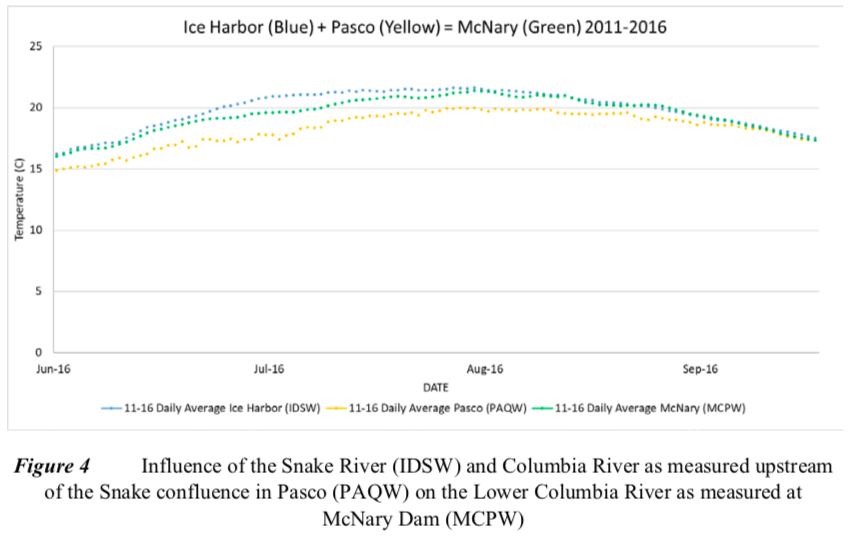forum
library
tutorial
contact

Federal Cuts Shut Down Salmon River,
Other Idaho Rivers' Monitoring Gauges
by Cynthia Sewell and Rocky Barker
Idaho Statesman, November 19, 2019
|
the film forum library tutorial contact |

|
Federal Cuts Shut Down Salmon River,
by Cynthia Sewell and Rocky Barker
|
Shoshone-Bannock Tribes are extremely concerned about the loss of
a long-term, critical river monitoring station on the Salmon River.
 A Salmon River temperature gauge critical for following the effects of climate change on Idaho's endangered sockeye salmon was shut down by the Trump administration on Oct. 1.
A Salmon River temperature gauge critical for following the effects of climate change on Idaho's endangered sockeye salmon was shut down by the Trump administration on Oct. 1.
The U.S. Geological Survey announced that it would no longer monitor river temperatures at its White Bird gauge on the lower Salmon River and sediment levels at a gauge on the Clearwater River at Spaulding. A third gauge that monitors flooding on the Weiser River was cut from year-round operation to January to June monitoring.
Turning off the sediment gauge has not concerned state and fisheries officials. But the White Bird gauge is considered important to salmon recovery efforts.
"Issues with temperature at White Bird is an important indicator for the migratory corridor and is often looked at when estimating Lower Granite to the Stanley Basin for sockeye," said Scott Pugrud, director of Idaho Office of Species Conservation.
The Shoshone-Bannock Tribes, who petitioned for the listing of sockeye salmon as an endangered species in 1991, said in a statement Tuesday they are "are extremely concerned about the loss of a long-term, critical river monitoring station on the Salmon River. "
The Idaho Conservation League said turning off the gauges "is yet another strike against salmon and steelhead as gauge data informs fishery management and water quality decisions."
"As our climate changes and Idaho's traditional patterns of rain, snow and run off change, Idaho needs access to more stream data, not less," said Justin Hayes, the league's executive director.
"Good data is necessary to make good decisions," he continued. "Stream gauges are often generating long-term data that is critical for the communities both nearby and downstream."
U.S. ARMY CORPS MAKES 'TOUGH DECISIONS'
The cuts, which would save $59,000 this fiscal year, were made by the U.S. Army Corps of Engineers, said Tim Merrick, a spokesman for the USGS in Boise.
"Our understanding is that they lost some of their funding and had to make some tough decisions about where to cut back on their support for USGS stream gauges," Merrick said.
The U.S. Army Corps of Engineers is a partner with USGS for some gauges and was forced to make the current budget cut, said Joe Saxon, a U.S. Army Corps of Engineers spokesman from Walla Walla, Washington.
"Ultimately, it is the USGS' decision," Saxon said.
The cuts come at the same time the Trump administration proposed reducing the U.S. Geological Survey budget by $177 million, or 15%.
The agency wrote in its budget proposal it had prioritized monitoring water quantity over water quality.
USGS also would move most of its headquarters to the Denver area under the plan, following the administration's game plan for the Bureau of Land Management and parts of the U.S. Department of Agriculture.
TEMPERATURE GAUGES PROVIDE CRITICAL DATA
The temperature gauge maintained at White Bird on the lower Salmon River south of Grangeville has become critical for scientists monitoring the fate of the endangered Snake River sockeye salmon, which spawn in the Sawtooth Valley.
The sockeye are especially vulnerable to midsummer's high river temperatures because that's when they migrate through the Columbia and Snake River corridor. Other salmon that spawn earlier or later can find cooler water refuges such as springs or cold-water tributaries to ride out the heat.
In 2015, fisheries biologists were optimistic when 4,000 adult endangered Snake River sockeye returned in the spring from the Pacific Ocean to the Bonneville Dam, the first major dam on the route in along the Columbia.
Then June temperatures spiked. Highs in the region rose to the upper 90s and 100s; temperatures in the Columbia River reached 73 degrees, warm enough to kill salmon. The gauge on the Salmon River showed the temperature there rose to a deadly 76 degrees at White Bird.
Just 56 Idaho sockeye made the trip back to the Sawtooth Valley on their own in 2015. Another 35 were trucked to Idaho Fish and Game's Eagle hatchery.
With years like 2015 expected to happen more frequently due to climate change, the White Bird gauge will be even more important to help managers protect the fish, said Dan Stone, a policy analyst with the Shoshone-Bannock Tribes.
"Migratory conditions are often limited by temperatures for species like sockeye, so many of our management actions are influenced by temperature data collected from the Salmon River stations," Stone said. "Funding for this temperature monitoring station should be prioritized, and if the USGS is in need of budget savings they should maintain this data set and focus on other aspects of their overall budget."
learn more on topics covered in the film
see the video
read the script
learn the songs
discussion forum
